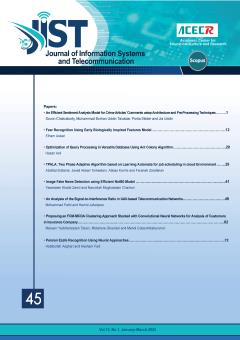The performance of many wireless protocols is tied to a quick Link Quality Estimation (LQE). However, some wireless applications need the estimation to respond quickly only to the persistent changes and ignore the transient changes of the channel, i.e., be agile and sta
More
The performance of many wireless protocols is tied to a quick Link Quality Estimation (LQE). However, some wireless applications need the estimation to respond quickly only to the persistent changes and ignore the transient changes of the channel, i.e., be agile and stable, respectively. In this paper, we propose an adaptive fuzzy filter to balance the stability and agility of LQE by mitigating the transient variation of it. The heart of the fuzzy filter is an Exponentially Weighted Moving Average (EWMA) low-pass filter that its smoothing factor is changed dynamically with fuzzy rules. We apply the adaptive fuzzy filter and a non-adaptive one, i.e., an EWMA with a constant smoothing factor, to several types of channels from short-term to long-term transitive channels. The comparison of the filters outputs shows that the non-adaptive filter is stable for large values of the smoothing factor and is agile for small values of smoothing factor, while the proposed adaptive filter outperforms the other ones in terms of balancing the agility and stability measured by the settling time and coefficient of variation, respectively. Notably, the proposed adaptive fuzzy filter performs in real time and its complexity is low, because of using limited number of fuzzy rules and membership functions.
Manuscript profile


